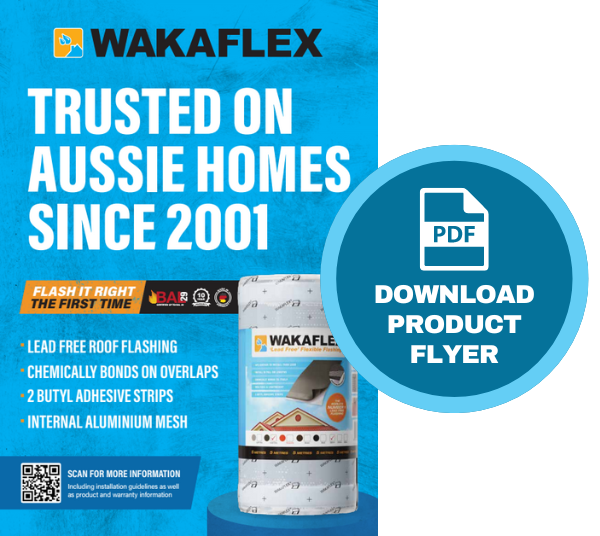
Lead Free Flashing for Safe Water Harvesting
Around chimneys and other roof penetrations lead flashings are traditionally used to create a watertight seal, but if poorly maintained lead flashings can cause major problems for tank water systems. There are now some safer alternatives.
The widespread public perception is that rainwater is safe to drink, and in most areas of Australia, the risk of illness arising from consumption is low “provided the water is visually clear, has little taste or smell and the storage and collection is via a well maintained tank and roof catchment system”.
Alongside local industry and very heavy traffic emissions, lead has recently been highlighted as another possible source of contamination, the argument being that poorly maintained roofs and gutters result in the leaching of lead into roof run-off; made worse by water made acidic by materials such as leaf litter.
In response to consumer concerns and government testing, many roof waterproofing products are being developed as alternatives to the high volume of lead flashing used by the building and plumbing industry.
The word lead conjures up a lot of emotion, there is lead in petrol, lead in paint, and lead in pipe and plumbing fixtures; however, lead is thought of as the major source of water tank contamination.
Testing and assessing lead hazards is essential if there is a potential risk from lead. Isolating lead hazards or lead processes is critical to reduce risk or water contamination in the household.
The Building Code of Australia 2006 (BCA) Volume 2, Part 3.5.1, prohibits lead flashings to any part of a roof that catches potable water. Lead flashing is commonly used on roofs where stepped flashing is required, for example where a roof is flashed at the junction of a masonry exterior wall.
Through extensive research CSIRO indicates that lead sheet failures are related to poor installation. The amount of roof flashing in a total roof area determines the degree of run-off caused by the elements.






